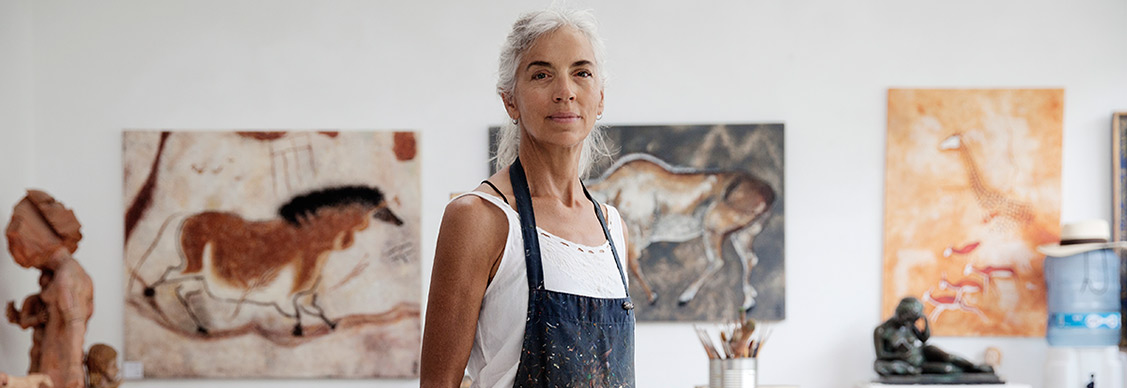5 ways office space is getting a new lease of life
Creative ways firms and landlords are making the most of under-utilized space
Weddings, artists and mini-golf courses are finding their way into offices as landlords and corporates experiment with alternative ways to make more use of space.
Whether it’s generating better returns, creating social value, or simply finding ways to get the buzz back into a building, offices are opening up to new possibilities.
Here are five ways companies are breathing new life into under-utilized or vacant office space.
1. Strategic subleasing
Some owner-occupiers are now double-hatting as landlords, subleasing extra floors to other firms. Their aim, often in large flagship offices, is to recoup costs and generate better returns on investment.
Take one global insurance company, which recently turned their large U.S. headquarters into a multi-tenanted building. They capitalized on occupier demand for premium space by marketing the sustainability features such as LEED Platinum certification, electric-vehicle charging stations and rainwater recycling.
The company also boosted demand with a full-service cafeteria, theater, conference center, golf simulator, and fitness facilities.
They have since signed a long-term anchor tenant and additional businesses.
Turning unused square feet into managed space – a type of non-operator branded, flexible office space – is another way for building owners to generate income without the hassle of finding tenants themselves. A third-party flex operator does the heavy lift by leasing space from the owner, then custom fitting-out and subleasing at an all-inclusive monthly rent to tenants.
2. Philanthropy and social value
With social value playing an increasingly larger role in corporate strategies, businesses are seeking ways to give back to local communities.
One global e-commerce firm formed a partnership with a local non-profit to give a number of floors in their Seattle building over to the creation of a homeless shelter. Separated from the space used by employees, it has its own private entrance, a large dining room, an industrial kitchen with commercial cooking equipment, recreation spaces for children and teens and office space for the firm’s legal team to provide support to shelter residents.
Another initiative in Dubai sees a global bank opening the ground floor of their building for a weekly farmer’s market, benefiting both local producers and employees.
In the UK, Lloyds Banking Group has announced they’re seeking partners to redevelop their empty offices and decommissioned data centers into new social housing projects, as part of a longer-term strategy to help increase the supply of affordable homes.
3. Artist studios and temporary galleries
Many landlords are finding use for empty office buildings and commercial properties by turning them into spaces for creatives.
There are organizations that help with this, such as the UK’s Hypha Studios, which matches creatives with landlords and empty spaces across Britain. The Creative Land Trust forms partnerships with owners, donors and investors to secure studio space for makers and artists, helping to regenerate vacant space.
There’s a boost for British landlords: businesses pay lower property taxes if they have nonprofits as tenants. So by letting to artists, landlords save money while improving their ESG credentials.
In the U.S., a 7-week arts exhibition featuring more than 1,000 artists and performers took place earlier this year in the heart of Washington DC. The event formed part of the city’s wider strategy to restore vitality to office corridors and was held in an empty 300,000 square foot, eight floor block slated for eventual residential conversion.
Meanwhile, in New York’s Financial District, artist Christopher Wool’s latest exhibition has been taking place on the 19th floor of a vacant former office space at 101 Greenwich.
4. Leisure and entertainment
In efforts to breathe new life into central business districts and keep them buzzing after hours, local councils are starting to create mixed-used neighborhoods.
On London’s Fleet Street, a former bank branch is being transformed into a mini-golf venue aimed at recreating the back streets of Tokyo, complete with noodle bar and café.
Meanwhile, firms are offering their spaces out for hire to local groups for networking events or meet-ups for those with similar interests or hobbies. In some cases, they’re even hosting weddings.
Sofar Sounds, a global music community that connects artists and audiences in 400 cities around the world, uses non-traditional venues for unique live music performances, including intimate after-hours concerts in office spaces.
5. Post-operative medical care facilities
As populations around the world age, more buildings could potentially be repurposed for medical services, particularly post-operative care.
In West London, there are plans to repurpose a building recently vacated by Japanese imaging solutions group Canon into a 98,000-square-foot post-operative care facility. The new center will feature overnight guest rooms, consultation and treatment areas, dental care facilities, pharmacy, radiology and MRI suites, a gym and physiotherapy centre, and a hydrotherapy pool.
